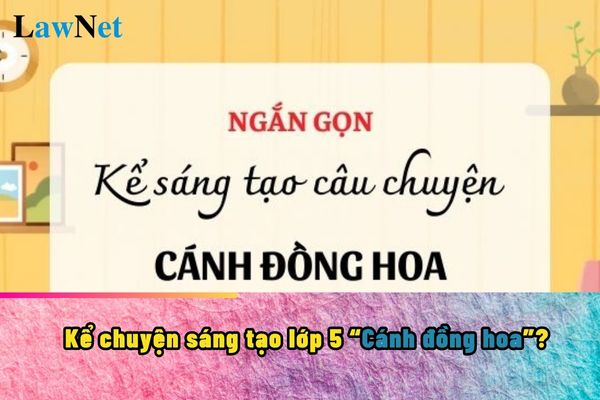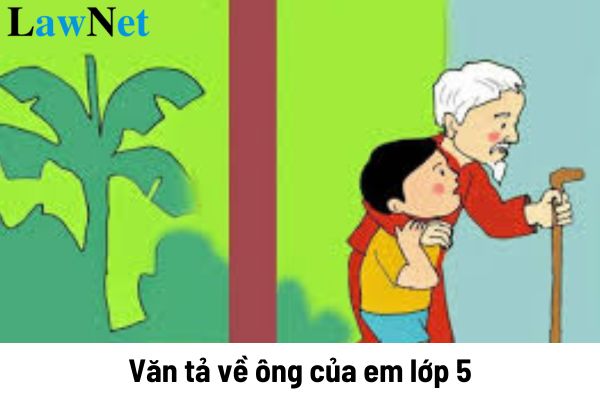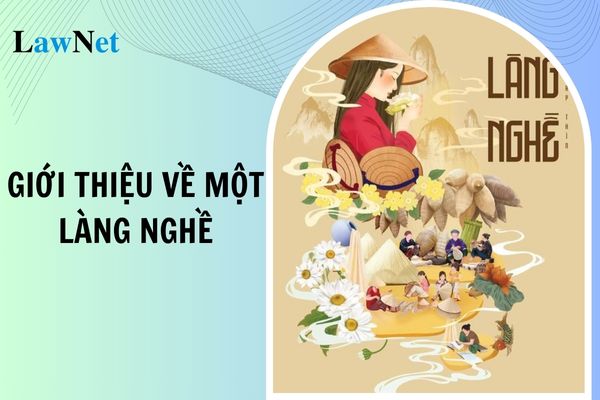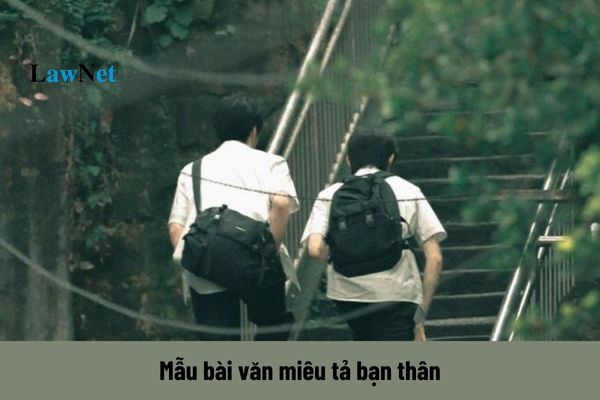What are guidelines on telling a creative story about flower fields in Vietnamese for grade 5 students? What is the allocation of reading teaching time in grade 5 Literature in Vietnam?
What are guidelines on telling a creative story about flower fields in Vietnamese for grade 5 students?
Some examples of creative storytelling about flower fields in Vietnamese for grade 5 students:
|
Telling a creative story about flower fields in Vietnamese for grade 5 students The Magical Flower Field Once upon a time, in a small village, there was a lush green meadow. The children Ja Ka, Mu Hoa, Ja Prok, and Mu Nho often came here to play. Ja Ka, with his little drum, always brought lively melodies that made everyone forget the way home. A Flower's Tale I am a small yellow daisy, born in a lush green field. At first, I was just a tiny seed, deep in the soil. Thanks to the cool raindrops and warm sunlight, I gradually germinated and grew. |
*Note: The information is for reference only./.

What are guidelines on telling a creative story about flower fields in Vietnamese for grade 5 students? What is the allocation of reading teaching time in grade 5 Literature in Vietnam? (Image from the Internet)
What are regulations on evaluation of primary school students in Vietnam?
Based on Article 3 of Circular 27/2020/TT-BGDDT, the synthesis of evaluating educational results is as follows:
- The purpose of assessment is to provide accurate and prompt information, determining achievements in learning and training according to the level of response required by the primary education curriculum and the progress of students to guide learning activities, adjust teaching activities to improve the quality of education. To be specific:
+ Help teachers adjust and innovate the forms of organization and methods of education during teaching, promptly discover students' efforts, and progress to motivate and detect difficulties that students cannot overcome on their own to guide and assist, enhancing the quality and efficiency of students' learning activities and practice, contributing to achieving the goals of primary education.
+ Help students self-reflect, participate in feedback; self-study and adjust their learning methods; communicate and cooperate; have enthusiasm for learning and training to improve.
- Assist parents or guardians (hereinafter referred to as parents) in participating in evaluating the learning and training process, the process of forming and developing students’ qualities, and abilities; actively cooperate with the school in educational activities.
- Help educational managers at all levels promptly direct educational activities, innovate teaching methods, and evaluation methods to achieve educational effectiveness.
- Help social organizations accurately and objectively understand information, enhancing the mobilization of social resources to invest in educational development.
What is the allocation of reading teaching time in grade 5 Literature in Vietnam?
According to Section 8 of the General Education Curriculum for Literature issued with Circular 32/2018/TT-BGDDT, the time allocation for implementing the Literature program at each educational level is as follows:
[1] Time Allocation by Class (in terms of periods)
| Grade 1 | Grade 2 | Grade 3 | Grade 4 | Grade 5 | Grade 6 | Grade 7 | Grade 8 | Grade 9 | Grade 10 | Grade 11 | Grade 12 |
| 420 | 350 | 245 | 245 | 245 | 140 | 140 | 140 | 140 | 105 | 105 | 105 |
In high school, each grade has an additional 35 periods for elective study topics.
[2] Time Allocation for Educational Content
The time allocation for educational content is arranged by textbook authors and teachers based on the requirements at each grade level and the actual teaching situation. However, it should ensure a reasonable proportion of the following components:
- Between providing knowledge and practicing skills (focusing on practical skills and application).
- Between different types of reading, writing, speaking, and listening texts (allocating more time for reading literary texts).
- Between reading, writing, speaking, and listening skills (allocating more time for reading practice); specifically, the proportion of time allocated to each skill at each grade level is as follows:
| Grade Group | Reading | Writing | Speaking and Listening | Periodic Assessment |
| From Grade 1 to Grade 3 | about 60% | about 25% | about 10% | about 5% |
| From Grade 4 to Grade 5 | about 63% | about 22% | about 10% | about 5% |
| From Grade 6 to Grade 9 | about 63% | about 22% | about 10% | about 5% |
| From Grade 10 to Grade 12 | about 60% | about 25% | about 10% | about 5% |
In addition, periods are allocated for elective study topics at each grade as follows:
| Elective Study Topics | Grade 10 | Grade 11 | Grade 12 |
| Topic 10.1: Study and report on a folk literature issue | 10 | ||
| Topic 10.2: Transpose a literary work into a play | 15 | ||
| Topic 10.3: Read, write, and introduce a collection of poems, short stories, or a novel | 10 | ||
| Topic 11.1: Study and report on a medieval literature issue | 10 | ||
| Topic 11.2: Explore language in modern society | 15 | ||
| Topic 11.3: Read, write, and introduce a literary author | 10 | ||
| Topic 12.1: Study and report on a modern and postmodern literature issue | 10 | ||
| Topic 12.2: Explore an artwork adapted from literature | 15 | ||
| Topic 12.3: Explore the creative style of a literary school: Classical, realistic, or romanticism | 10 |
>>> Download General Education Curriculum for Literature issued with Circular 32/2018/TT-BGDDT
Hence, the allocated teaching time for reading in grade 5 Literature is about 63%.










- Vietnam: What is the sample outline of an essay on the analysis of expressions of national spirit in the Poem "Việt Bắc" for 12th-grade students? What patriotic qualities are required for 12th-grade students?
- Vietnam: What are your thoughts on the Poem "Tiếng ru" by To Huu? How many lessons are there in the 12th-grade Literature curriculum per year?
- What are the sample essays describing your grandfather for 5th-grade students in Vietnam? What are the assessment criteria for 5th-grade students in 2024?
- Vietnam: What are the sample social argumentative essays on social media etiquette for 10th-grade students? What Vietnamese knowledge do 10th-grade students learn?
- Vietnam: Why is the French Bourgeois Revolution considered the most thorough one? What learning outcomes are required for 11th-grade students after studying the bourgeois revolution?
- Vietnam: What is the atmosphere? What is the grade at which students are required to master the knowledge of the atmosphere in the History and Geography curriculum?
- Vietnam: Why does the phenomenon of day and night alternation occur on Earth? What is the grade at which students learn about the phenomenon of day and night alternation on Earth?
- What is the newest report template on distance education at the higher education level in Vietnam?
- Vietnam: What are the shortest sample expositions on Ba Den Mountain for 9th-grade students? What learning outcomes are required for the writing process in the 9th-grade Literature curriculum?
- In Vietnam, what does local time mean? What is the grade at which local time is taught in the History and Geography curriculum?

